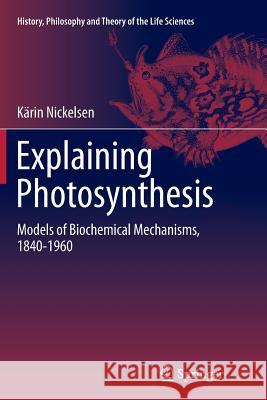Explaining Photosynthesis: Models of Biochemical Mechanisms, 1840-1960 » książka
topmenu
Explaining Photosynthesis: Models of Biochemical Mechanisms, 1840-1960
ISBN-13: 9789402406825 / Angielski / Miękka / 2016 / 349 str.
Explaining Photosynthesis: Models of Biochemical Mechanisms, 1840-1960
ISBN-13: 9789402406825 / Angielski / Miękka / 2016 / 349 str.
cena 443,82
(netto: 422,69 VAT: 5%)
Najniższa cena z 30 dni: 424,07
(netto: 422,69 VAT: 5%)
Najniższa cena z 30 dni: 424,07
Termin realizacji zamówienia:
ok. 22 dni roboczych
Bez gwarancji dostawy przed świętami
ok. 22 dni roboczych
Bez gwarancji dostawy przed świętami
Darmowa dostawa!
Wydawca:
Springer
Seria wydawnicza:
Język:
Angielski
ISBN-13:
9789402406825
Rok wydania:
2016
Wydanie:
Softcover Repri
Numer serii:
000430567
Ilość stron:
349
Waga:
0.50 kg
Wymiary:
23.39 x 15.6 x 1.91
Oprawa:
Miękka
Wolumenów:
01
Dodatkowe informacje:
Wydanie ilustrowane











